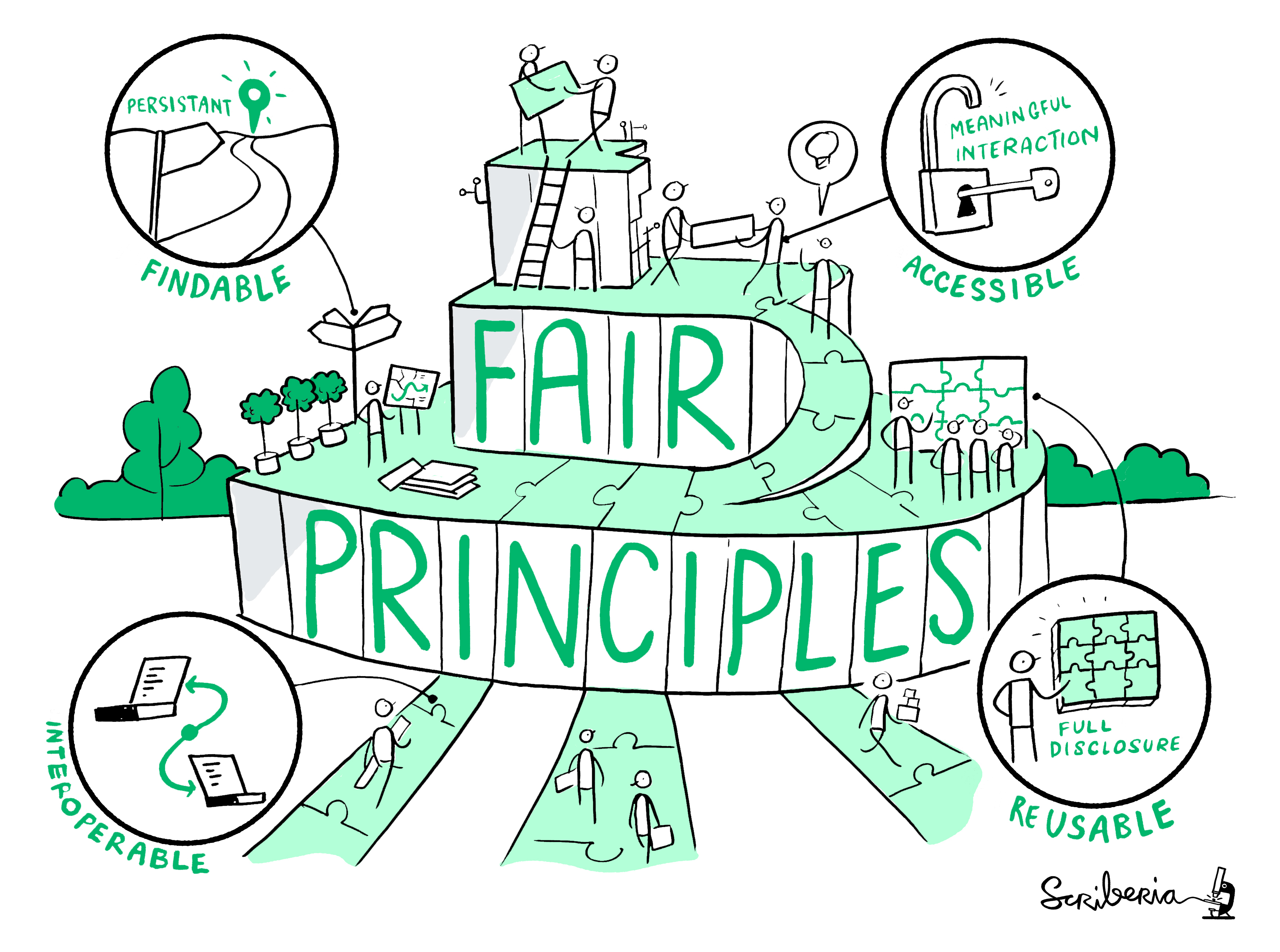Conclusion
Overview
Teaching: 0 min
Exercises: 0 minQuestions
How can I assess the FAIRness of my data?
What do I do now to improve the FAIRness of my data?
Objectives
Relate each FAIRification practice with FAIR principles.
Be aware of available tools/resources for assessing FAIRness of your data.
Understand the next steps you can take to improve FAIRness of your data.
FAIRification practices and FAIR principles
We discussed each FAIRification practice, i.e. documentation, metadata, file formats, access to data, persistent identifiers, and data licenses. We also explained what a FAIRification practice means in a FAIR context. In summary:
Make your research findable
- Publish your data and/or metadata in a searchable resource such as a repository that assigns a persistent identifier.
- Include rich accurate machine-readable descriptive metadata and keywords to your data, preferably according to your community standards.
Make your data acessible
- Attach a data license or clear data accessibility statement in your openly available administrative metadata.
- Ensure your data are archived in long-term storage and retrievable by their persistent identifier using a standard protocol.
- Give access to the metadata, even if the data are closed.
Make your data interoperable
- Include sufficient and structural metadata in accordance with your research community’s standards.
- Use common standards, terminologies, vocabularies, and ontologies for the data.
- Prefer open, long-term viable file formats for your data and metadata.
Make your data reusable
- Attach all the relevant contextual information in either the documentation or metadata.
- Include sufficient and structural metadata in accordance with your research community’s standards.
- Prefer open, long-term viable file formats for your data and metadata.
- Apply a machine-readable data license.
 This image was created by Scriberia for The Turing Way community and is used under a
CC-BY license. Source: https://doi.org/10.5281/zenodo.3695300
This image was created by Scriberia for The Turing Way community and is used under a
CC-BY license. Source: https://doi.org/10.5281/zenodo.3695300
Assessing FAIRness
FAIR is a journey. The FAIR principles are guidelines. A FAIR assessment now is a snapshot in time. Nevertheless, individuals and communities look to how FAIR their data are. The reasons are various, including gaining a better understanding and making improvements. Ultimately, an assessment can be a helpful guide on the path to becoming more FAIR.
The following are some resources and tools to help you get started.
- FAIR-Aware assessment tool.
- Zenodo overview of how the service responds to the FAIR principles.
- A list of resources for the assessment of digital objects provided by FAIRassist.
- Mirror, mirror on the wall, who is the FAIRest one of all?
- The Australian Research Data Commons’ FAIR data self-assessment tool.
Improving FAIRness
We provided recommendations, examples of steps you can take before, during and after your research project to make your research data more FAIR. FAIR sounds like a lot of work. However, here is how you can get started:
- Understand how FAIR translates to your field/community.
- Use standards that are common to your field/community.
- Collaborate with other communities to define a relevant metadata scheme/standards.
- Check the requirements of the repository where data is stored.
Make a checklist for your data
Here are some questions about the use case you chose in the introduction of this tutorial, here.
We have explored FAIR principles. Now, try to make a checklist to discuss:
- how FAIR your research data are.
- what measures could be taken to improve FAIRness of your data.
Finding more guidance to go FAIR
- Follow a framework guiding FAIRification e.g. Three-point FAIRification Framework.
- Have a look at Research Data Management starter kit.
- Ask librarians/expertise in information management for help with the process.
Further Reading
Key Points
FAIRification practices are about documentation, metadata, file formats, access to data, persistent identifiers, and data licenses.
The FAIR principles provide clear handles on data management in the movement towards open and sustainable science.
The FAIR principles promote maximum use of research data, involving all the stakeholders from data producers to funding agencies.